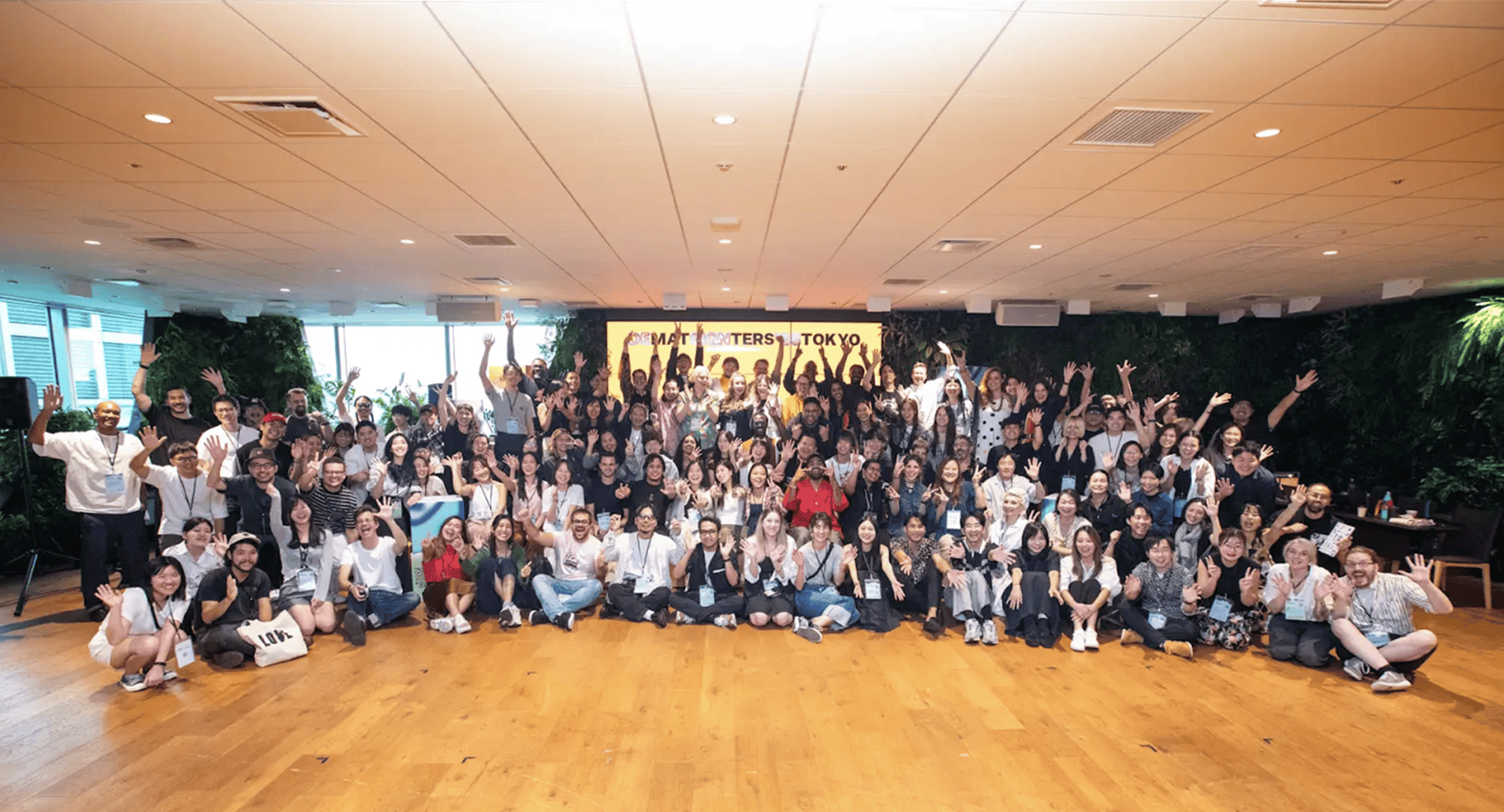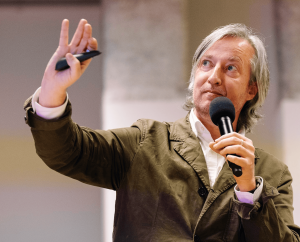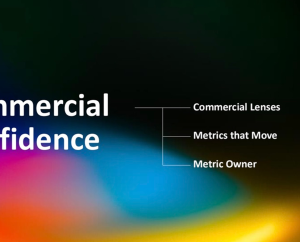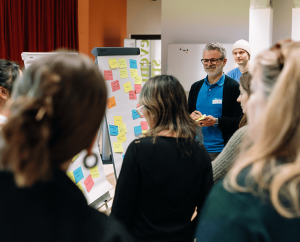Warm, inspiring, magic, community, real, intimate, buzzing, groove, connection, closeness, passion, fresh, deep, energy, excitement, precious…
These are some of the words that have been used in recap posts and DMs after the conclusion of Design Matters Tokyo 2025. Half of these words I would never have previously associated with a design conference–or any conference, for that matter.
Yet, those characteristics were what we were able to collectively design and harness.
Over the two-day experience, we witnessed countless connections being made–whether they were connections with old friends, with strangers from halfway across the world, or the act of connecting the dots within oneself, thanks to new insights and inspirations.
There are plenty of ways we can cut through the insights of the weekend, with different slices representing different takeaways. Here’s what stood out to me, as told with the help of some key Japanese vocabulary:
Discovering What Is You “-ppoi”
-ppoi (っぽい) is a suffix whose English translation might be “like,” “seems like,” or “-ish.” For example, saying that someone is kodomo-ppoi 子供っぽい means they’re like a child, or childish. We often use this in Japanese without giving it much thought. However, Casey Yoneyama’s presentation, in which he talked about redefining what Yonex-ppoi ought to be, ended up framing a strong underlying theme of the conference: Purpose.
Who are you, and what do you bring to the table? What drives you and differentiates you? Why?
Multiple designers touched on this topic, but I want to highlight a couple of really strong examples that I’m still mulling over:
– Minami Hirayama shared her strong personal ethos of how, in an effort to be more sustainable, she does not work with clients who create unnecessary desires (leading to wasteful design).
– Kenta Kondo emphasized actual, hands-on work bringing regenerative futures to life through the “ontological prototype” of Maimee Rice Commons
– And of course, Casey, touching on the evolution of the Yonex brand through the decades, and how heritage brands can also evolve through authentic customer engagement opportunities (and not contrived ones)
A realization of one’s purpose leads to a more fulfilling life, marked by authentic actions. We had stories shared of not only personal purpose being realized, but purpose as a human, as a designer, as a brand, as a collective.
What’s you-ppoi? What’s your purpose?

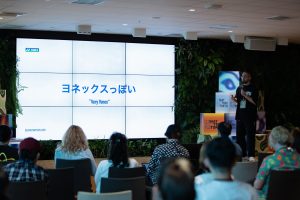
Honing Your Perspective and Discernment Via “Shigeki”
Shigeki 刺激 is one of my favorite words in Japanese. It isn’t easily translated, but in English, it encapsulates words like “stimulus,” “motivation,” “thrill,” and “excitement.” In the context of design, shigeki might refer to the input that we take in–the things that excite us and inspire us.
As humans, we have the ability to take in shigeki at will. We can choose to immerse ourselves in new situations and proactively (or reactively) be inspired. AI is powered by the input (data, prompts) that we choose to give it. And in that way, it’s not necessarily shigeki, but rather un-inspired data, still subject to human curation.
As Ben Shih put it, “Designers differentiate, AI averages.” We have the power as humans to ask questions and discern what to do, based on the shigeki we take in, in a way that AI cannot.
Alastair Simpson also shared with us: “Taste separates output from outcomes.” He encouraged us to hone our taste as designers, as that is what makes work truly great.
All of us ought to continue openly seeking out shigeki as we develop our sense of purpose as well as our sensibility as designers. After all, you are what you eat.
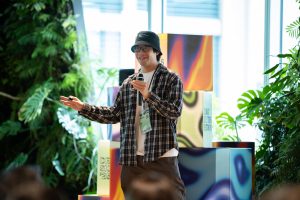

Back to Basics: “Nemawashi” and Other Soft Skills
Regardless of how “expert” you become as a designer honing your craft, what you do ultimately will not matter if you do not win over the fellow humans in your room–your team, your clients, and all the other stakeholders around.
“Nemawashi” literally refers to the act of preparing a tree’s roots before transplanting it. In everyday Japanese business communications, it is the (often tedious) act of consensus-building, making sure that you have conversations with all relevant stakeholders beforehand to gain buy-in before making a proposal to the entire group.
In the West, we might refer to this as stakeholder management or engagement, but nemawashi speaks to something much deeper than that. It speaks to having respect for the other parties through cultivating trusting relationships–essential for collective decision-making and the success of any initiative.
While those who work in Japan may at times lament how tedious the process can be, or simply take it for granted, seeing it afresh through the lens of the Design Matters Tokyo experience has me reflecting on the importance of soft skills.
There must be something going on in the design community, because this felt like one of the strongest throughlines for the talks this year. Iban Benzal, Evan Yifan Liu, Chaz Spears, and James Hsu, spoke to the topic of soft skills explicitly and gave practical tips on what kind of questions we can be asking of our stakeholders, and how empathy will go a long way, especially when we want to be seen as leaders. Chaz put it well: “Soft skills turn concepts into shipped work.”
More key quotes:
– Iban: “Preaching is not partnering.”
– James: “If you can’t influence decisions, your talent does not matter.”
– Chaz: “What if we are the idiots” (Side note: Similar to Cheri Flewell-Smith earlier on Day 1, with “What if we are the monsters”… Too often we point fingers at everyone else in the room for why our ideas aren’t moving forward, when more often than not, we ought to point at ourselves and think about how we can take responsibility).

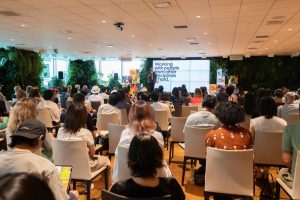

That’s a Wrap (and Recap)
After the conference wrapped, I mentioned in an Instagram DM to one of the speakers that it really felt like all the right ingredients for a good event came together.
It is a testament to the curation powers of the Design Matters Tokyo 2025 organizers for selecting just the right mix of cross-pollinating speakers and workshop facilitators. But perhaps more importantly, everyone in the room – speakers, facilitators, attendees, staff, sponsors – came with an open mind and heart.
While people want insights and inspirations, above all, they are craving authentic connections. There was such a hunger for it in the room – a hunger to be accepted, to feel warm and welcomed, to learn and to share, to make a new friend.
In that sense, it is no surprise that some of the key themes of purpose, perspective, discernment, and soft skills spoke to what it really means to be human. Yes, we can continue to hone our craft as designers, get better at prompting AI, and learn some new tools. But at the end of the day, we ought to (re)learn what it means to be human. And that is best done in a community.
There is no better time than now for Design Matters and other organizations to continue cultivating community, and no better time than now for designers to differentiate themselves, with intention.
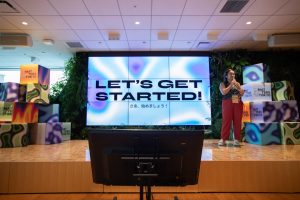
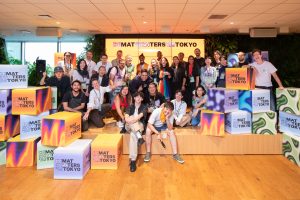
***
A big thanks to Rebekah Cheng for hosting DMT25! If you want to know more about Rebekah, follow her on her platforms:


